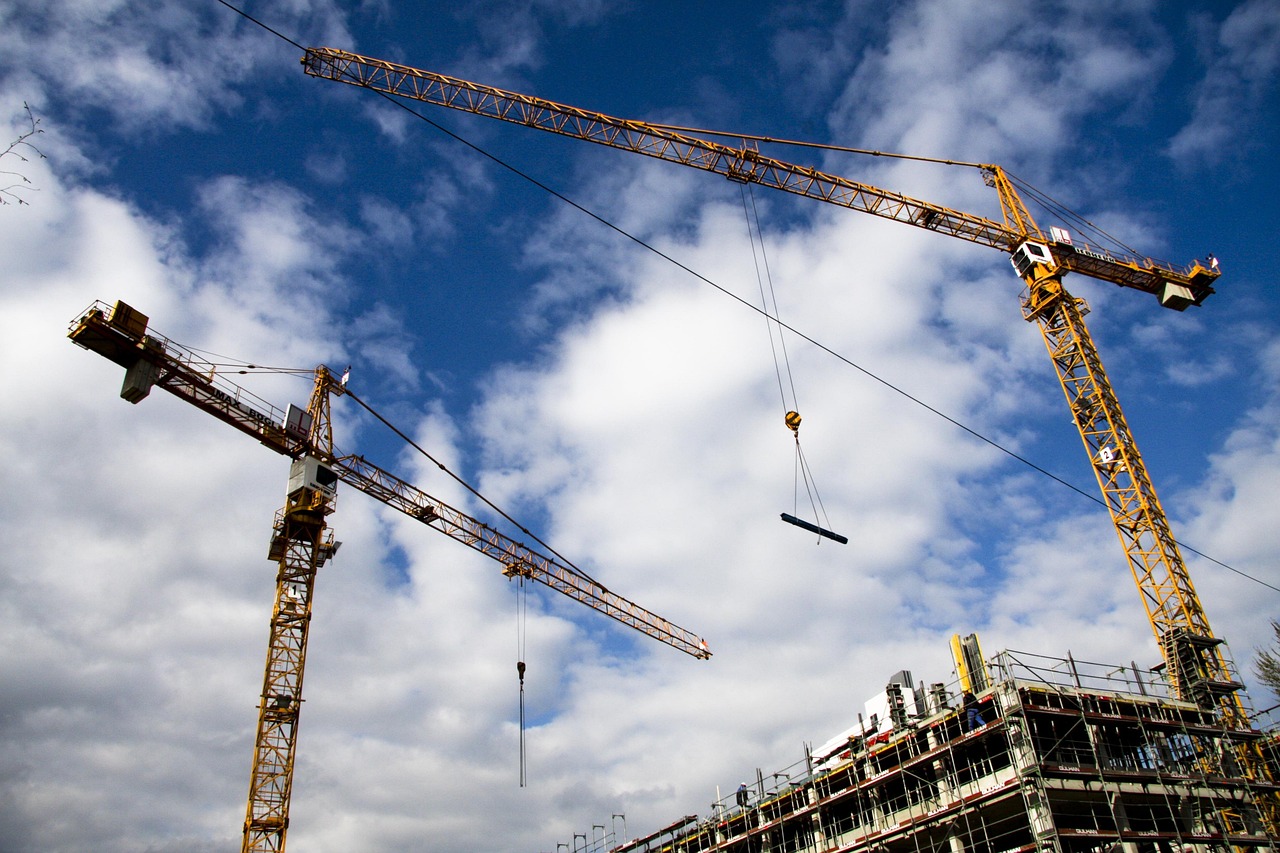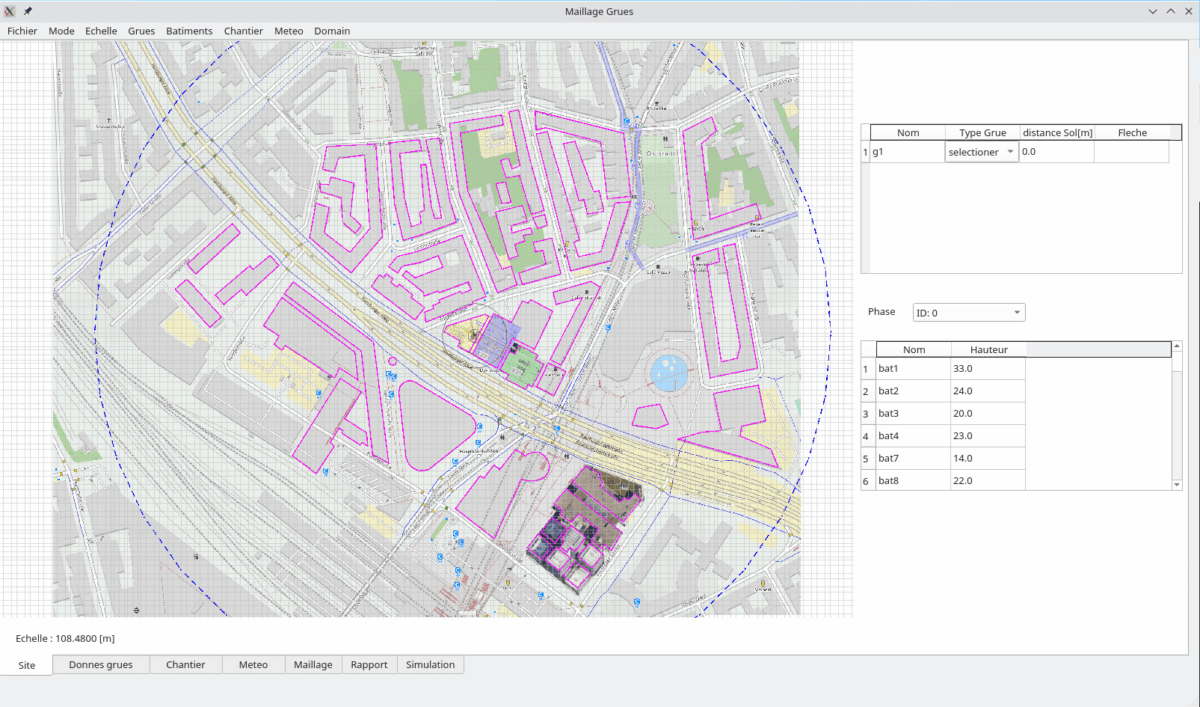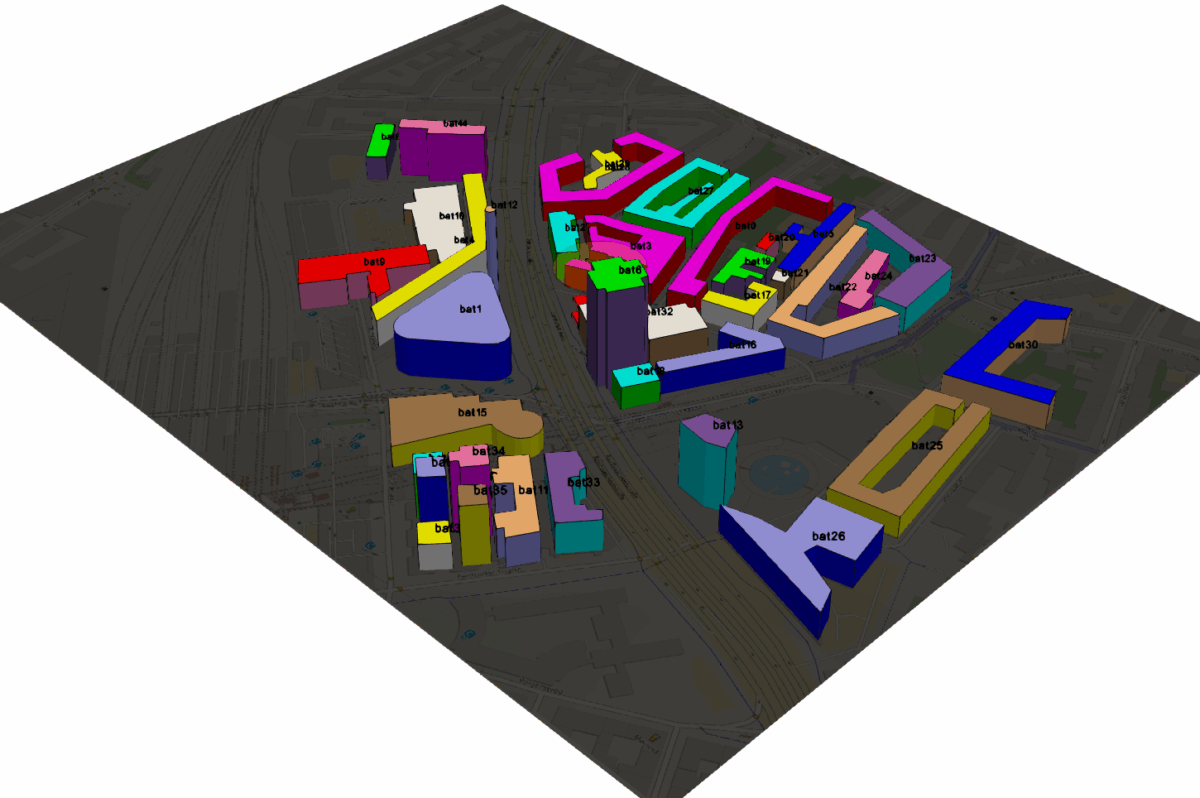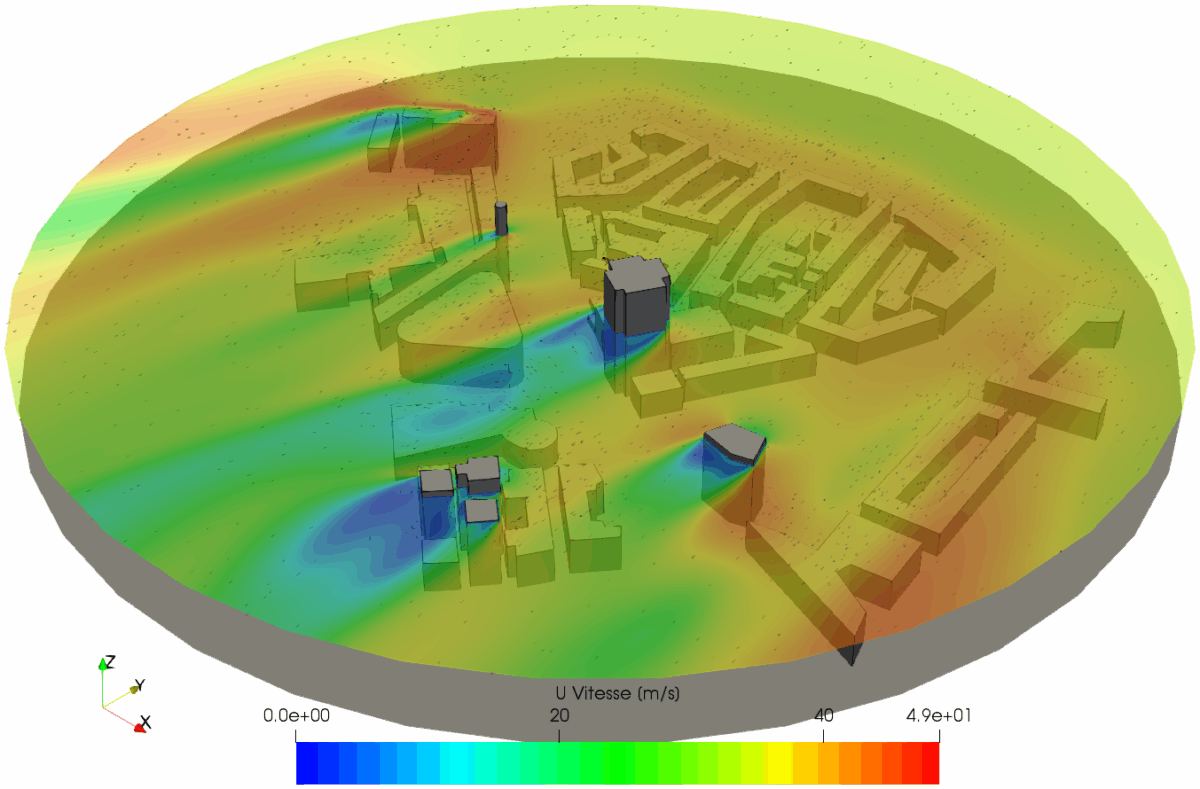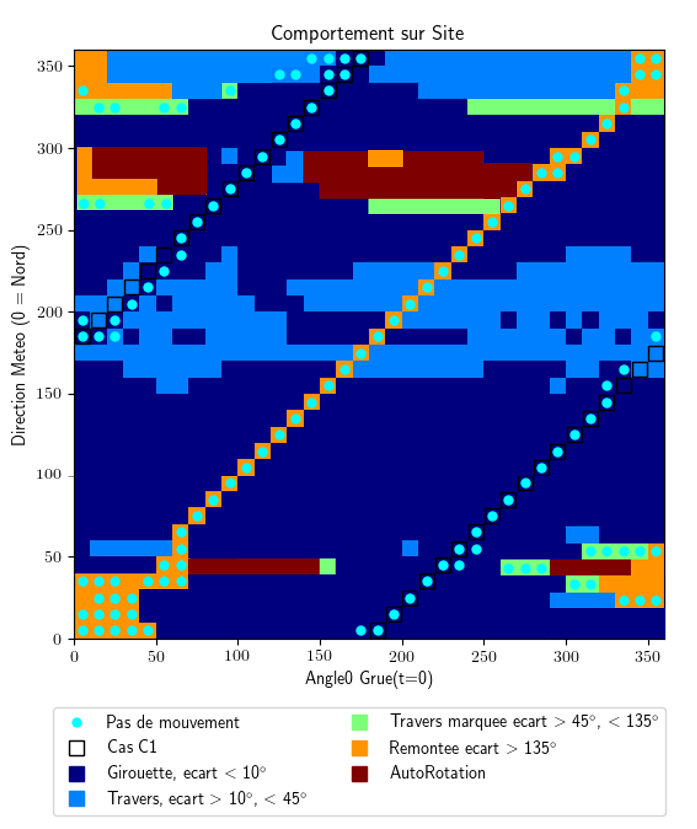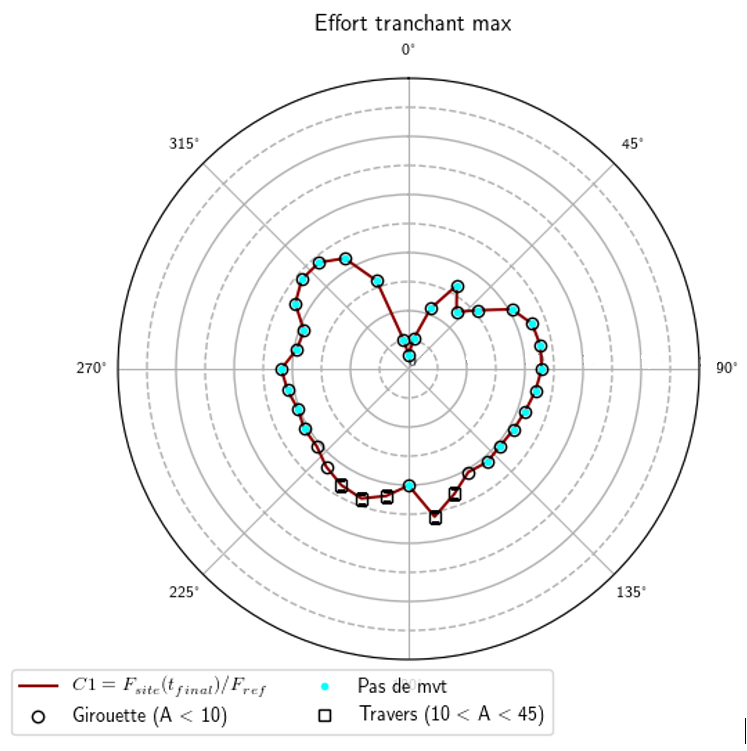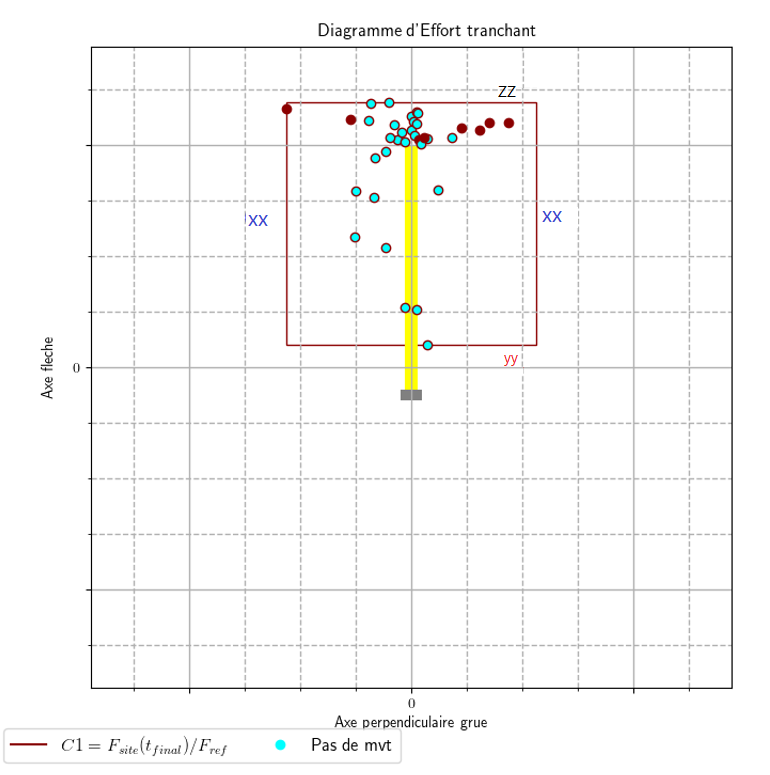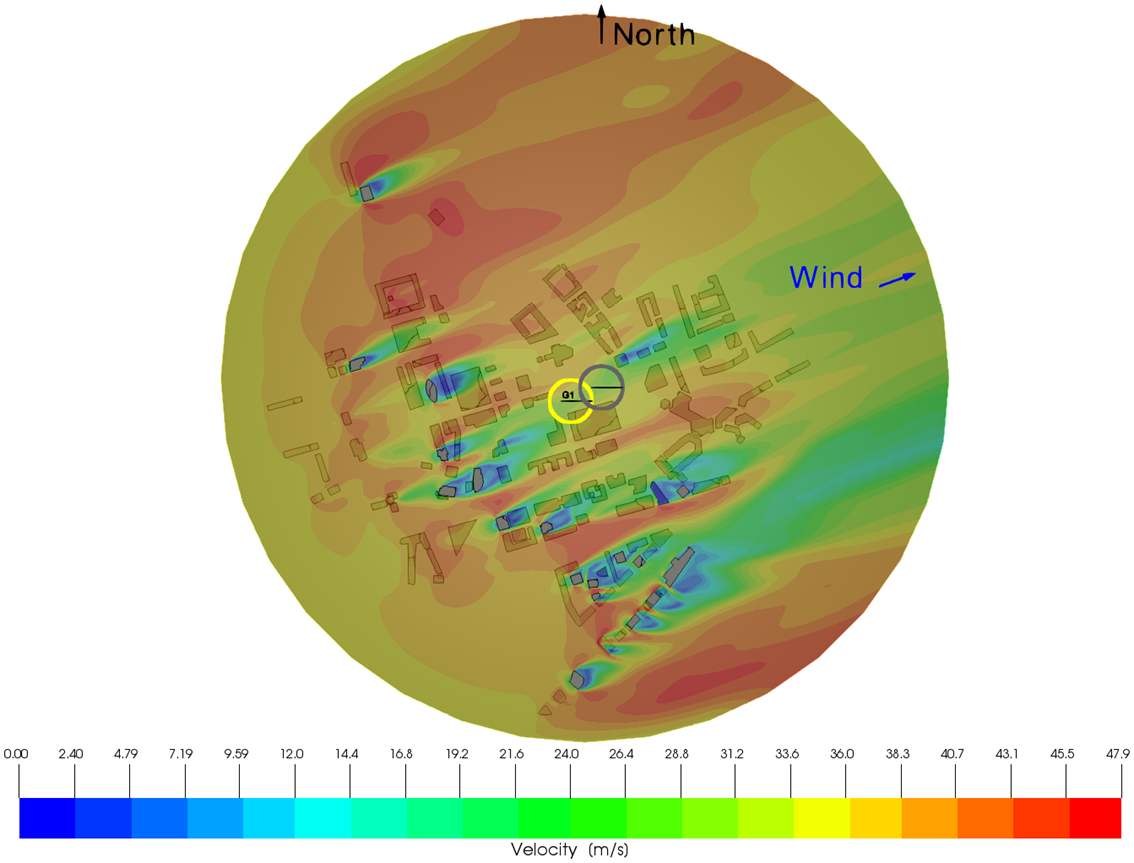Site effects: a source of incidents
On urban construction sites, the stability of tower cranes is crucial, even when they are not in use.
When the crane is out of service, it is placed in weathervane position. Generally speaking, for a given wind speed, the crane is positioned to minimize the force exerted by the wind, i.e., the crane jib is oriented in the direction of the wind (it is positioned downwind). This is the normal weathervane position. However, on a construction site, the wind profile in the area in question may be modified locally by the presence of buildings: this is known as site effects. The aerodynamic behavior of the rotating part of the crane, consisting of the jib and counter jib, is significantly affected by this.
The position of the crane may differ from that of the normal weathervane, and the aerodynamic forces exerted by the wind on the crane may also be increased. The effects of wind, modified locally by buildings, can cause:
- Misalignment of the crane with respect to the direction of the wind in a flat field: departure from the weathervane position;
- The crane jib to go into self-rotation;
- Unforeseen mechanical overloads, or even material damage;
- Increased safety risks, up to and including the crane tipping over.
We have developed a method for analyzing the effects of wind on crane stability based on CFD simulation and dynamic crane modeling.

